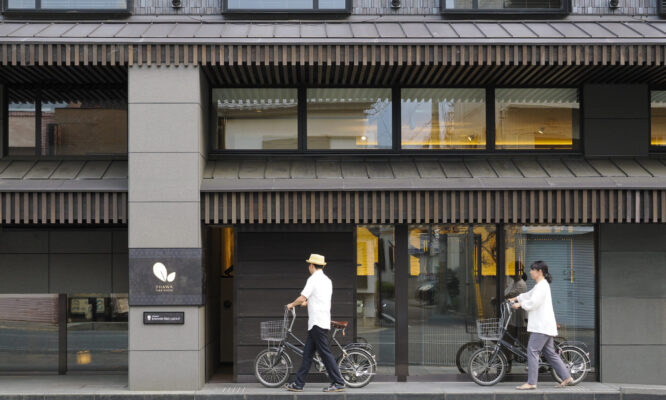Championing Peranakan cooking and culture, Chef Debbie Teoh explains why this unique cuisine should be preserved

Growing up in the southern state of Malacca and spending school holidays in northern Penang, with a Malaccan Nyonya mother and Penang Baba father, Debbie Teoh is a full-blooded Peranakan through and through. It is no wonder, then, that this slim, self-made chef is passionate about promoting Peranakan cuisine, along with other aspects of this unique Straits Chinese subculture with Sino-Malay attributes.
Teoh started young. When she was in secondary school, holidays were spent in the family’s ancestral home in Penang, where two of her aunts – one an excellent cook and the other an equally impressive baker – taught her to cook, mostly Peranakan food. It was a treat for Teoh to learn cooking, something she looked forward to.

Later, during her study gap while waiting for her Malaysian Certificate of Education examination results, Teoh started noticing that the Peranakan food served in restaurants did not have the same taste as their food at home, as if something was missing. So she invited friends over and cooked for them, giving them a real taste of the cuisine. Since then, even when she studied a different vocation in university and was employed in human resources, promoting authentic Peranakan food has been Teoh’s personal mission.
Seventeen years of cooking professionally, seven books and countless food articles later, Teoh has made a formidable name for herself as the authority on Peranakan cuisine and culture in Malaysia. Often invited to conduct cooking demonstrations and talks, she takes it upon herself to educate her audience and the public at large about the uniqueness of Peranakan cuisine and the richness of Peranakan culture.
“Many people, including those in the Peranakan community itself, are not aware of the symbolism and customs behind Peranakan dishes,” Teoh explains. “For example, dishes that are served daily are different from dishes served at weddings, and there are specific reasons behind that. Meanwhile, food for ancestral worship comprises totally different dishes.”

Some dishes also have a deeper meaning behind their preparations. For example, the well-loved nasi lemak is served on the twelfth day after a wedding to indicate consummation. The white coconut rice represents the bride’s purity, while the red sambal hints at the couple’s level of bedroom intimacy, and that all is fine between the two recently united families. The absence of nasi lemak might spell trouble between the couple. However, this tradition has been largely abandoned in recent years, replaced with a more amicable custom involving sugarcane to represent fertility.
Similarly, the seemingly humble kaya spread, with its golden hue made of huge amounts of kampung eggs (equivalent to free-range eggs from hens reared in villages), signifies abundance. It is the richly interesting meanings behind the preparation and serving of certain Peranakan dishes that Teoh wants to share with the younger generation, along with the imperative insight into preparing Peranakan cooking the traditional way and why it should be so.

Because it has been a big part of her life, Teoh is very aware of how Peranakan cuisine has evolved over the years. She acknowledges that the cuisine needs to evolve to be relevant to the younger generation, and does not fault restaurant proprietors for resorting to shortcuts to save time and costs – they are, after all, running a business and must ensure sustainability. However, it is Teoh’s wish that food lovers or restaurant patrons understand why Peranakan food can be expensive and how a traditionally prepared dish is perfectly worth the price.
“Preparing certain dishes can be a long and tedious process,” says Teoh. “For example, to prepare a dish with buah keluak (a type of nut), the nuts need to be soaked for at least three days, and then washed and scrubbed. Cracking them open takes up more time, so it is very time- and labour-intensive.”
“And they are not cheap. Add the cost to labour costs as well as other ingredients in the dish, like prawns and spices, for example, as well as the complex culinary techniques involved, and it all adds up,” explains Teoh. She reckons the seemingly high price might be one reason why interest in authentic Peranakan cuisine is weak. “But people don’t mind paying a lot for French food, though,” she muses.
“Another plus point to preparing Peranakan cooking the right way is prolonged shelf life of the food,” says Teoh, “Back in the day when families did not have a lot to give, neighbours would exchange golden cheok hua jelly in different animal shapes. Believe it or not, these jellies could stay edible for weeks or even months without refrigeration.”

While Teoh has been invited to participate in international slow food movement events such as Terra Madre Salone del Gusto in Turin, Italy, and has been featured in television shows featuring Asian cuisines, including in a recent episode for National Geographic, she finds that efforts to preserve and popularise Peranakan cuisine are still wanting.
Teoh regularly partners with organisations such as the Baba & Nyonya Heritage Museum in Malacca, various Peranakan associations and even private restaurants to promote Peranakan cuisine. However, she sincerely hopes that more government agencies and even municipal councils will be proactive in helping to raise appreciation for the culture, especially since it is unique to Malaysia and her immediate neighbours.









